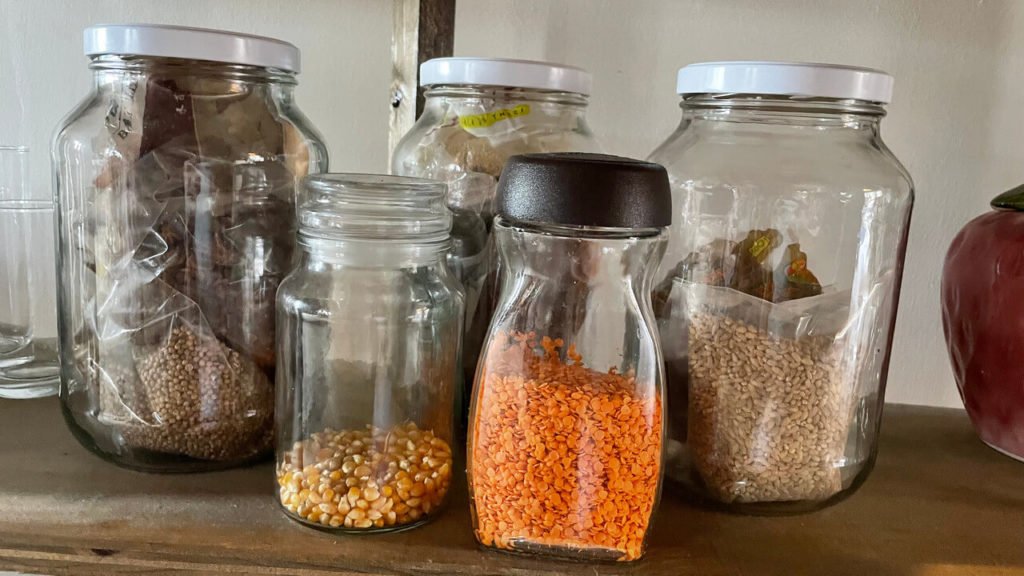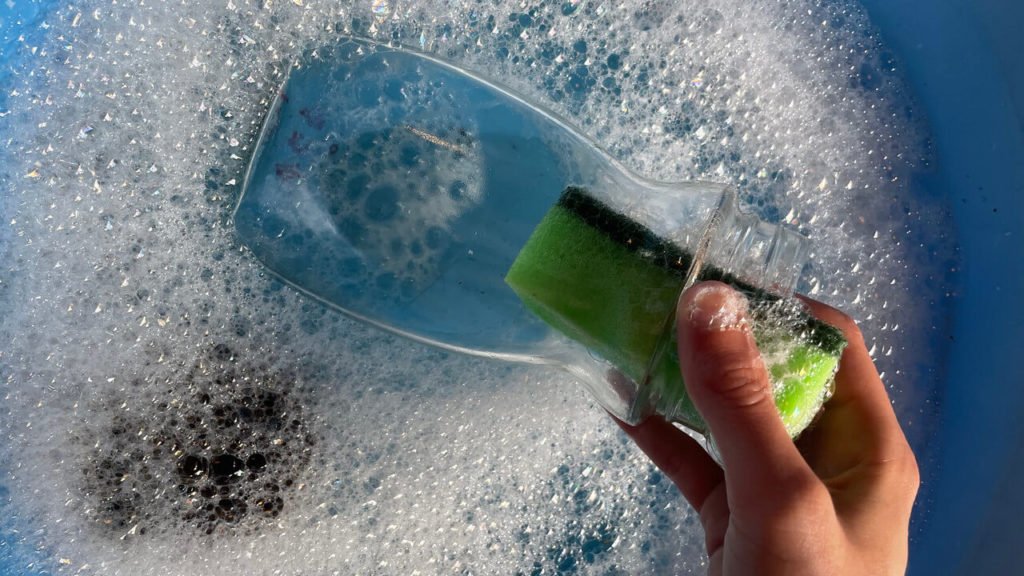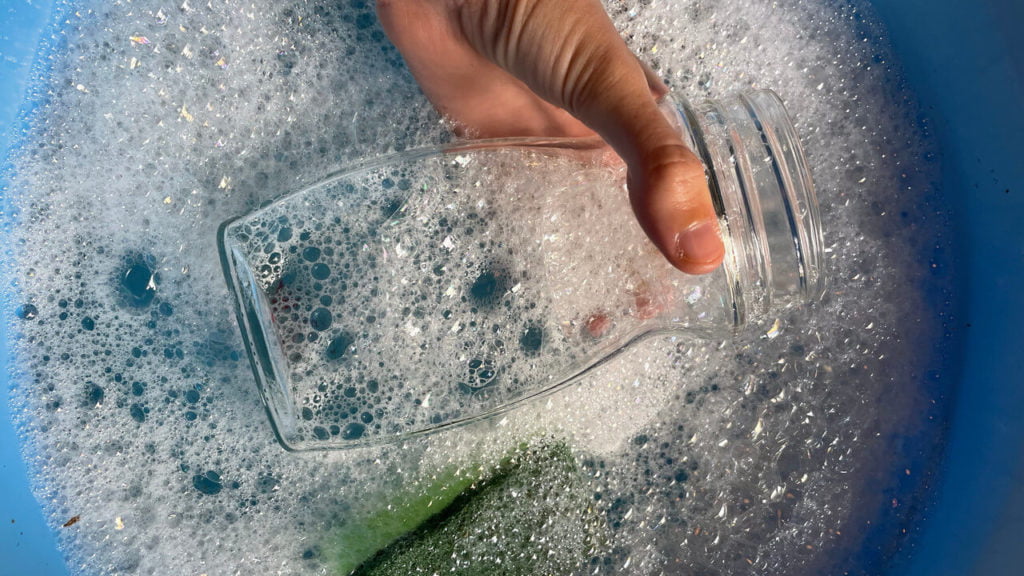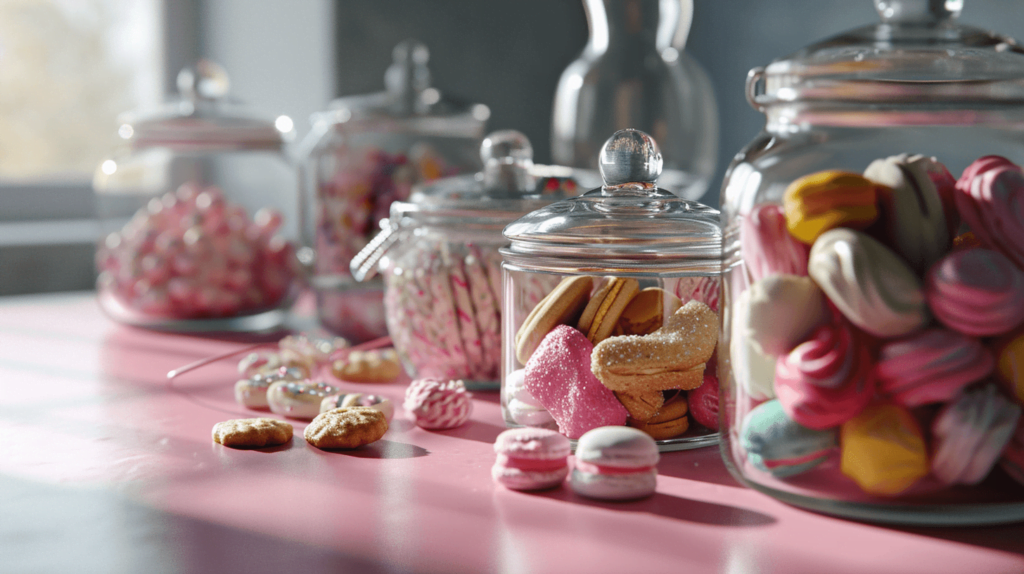I don't care if it's half empty or half full; the glass is here to stay. Glass jar, that is.
In a world full of single-use plastic bottles, glass jars feel are a two-fold treat. While the jar's original contents are bound to run out, the vessel itself is the gift that keeps on giving. Inherently sustainable, glass jars are refillable, reusable, and recyclable (not to mention upcyclable - if that wasn't a word before, it is now).
They have helped me tremendously reduce waste and have been pivotal in optimizing my household for greener living.
While glass jars have inspired me to make my own beauty/health products and brave a few home decor adventures, I find I mostly reuse glass bottles and jars for food storage and kitchen shenanigans. I love that I can easily store my food and cleaning products in a way that is easy to discern, visually appealing, and aligned with my choice to shop from zero-waste stores.
As a clean freak, I really feel peace of mind knowing my food is being kept in the safest and most hygienic material food can be stored in.
Though glass is a safe, sustainable, and multi-purpose storage container, these vessels need a little TLC from time to time. If the glass jar is fresh from the store, washing will require label removal while general maintenance and regular cleaning (hot soapy water will do) ensure your glass bottles and mason jars stay hygienic and odorless for maximum cleanliness.
I've whipped up a little how-to so that you're clued up and ready for a pantry as squeaky-clean as it is sustainable:

You'll want to soak the jars for a few hours or leave overnight hot water. This step is to get the attached labels saturated and easier for you to remove.
Why remove the labels, you might ask? Well, the labels are much of a muchness. I personally prefer to remove them as, more often than not, they're added to the glass with toxic, super sticky adhesives that fade over time and can be quite the eyesore when it comes to pantry organization.
Now, here's where things can go one of two ways: pure luck might see you scrape the presoaked label (with your nails or steel wool) off the glass OR you could get the dreaded clingers, as I like to call them. For stubborn labels that leave a sticky residue, apply vegetable oil, peanut butter, or lemon essential oil and leave for 30 minutes.
After 30 minutes revisit the label with your nails or steel wool and scrub/scrape until all glue has been removed. You'll need a little patience and elbow grease in some cases so, if the sticky substance is putting up a fight, repeat stages 1-3 including the hot water soak.
Now that we're like a millennial couple afraid of commitment and have removed the label, you'll want to give the jar a good ol' scrub with more focus on the inside of the jar this time. Prepare warm water and your cleaning liquid of choice. Separate the jar from its lid and place each piece into your soapy water and soak for 5-10 minutes.

Once you've soaked your jar and lid, scrub the entire inside of the jar with your cleaning tool of choice (while a regular cleaning sponge will do, a bottle brush or steel wool will work perfectly too, if not better. Once you've thoroughly cleaned the inside of the jar, scrub the exterior, and don't forget the bottom! Your final wash will be the lids - food residue and odors can cling to the lid's lip so be sure to give the circumference fold extra attention.

Rinse with warm water and reuse however you choose fit.
If, after cleaning glass bottles and jars, some continue to smell like the previously-stored contents, you can place the jar and lid in sunlight outside or on a window sill for a few hours. If the jar once stored pickled or pungent items and you're still getting whiffs then add baking soda, vinegar, or a paste combining both to the inside and lid of the jar, and let it sit for a few 2-3 hours before rinsing with warm water.
Disclaimer: In some instances, odors will be impossible to remove. In these cases, you can either recycle the lids and use the jar as a drinking glass or plant holder or seal the jar with malleable silicone lids. I love the ones from Earth Hero.
What you choose to do with your freshly cleaned jar is up to you. I've radically improved my pantry with glass jars and use them to store staples like spices, legumes, and cleaning products. I've seen many zero-waste bloggers reuse glass bottles and jars when making their own beauty and household products as well as repurposing them for DIY craft and decor projects.
Glass is safe in that it is hygienic but hazardous in that glass is fragile and can be easily broken. It's important to carefully handle glass throughout the washing process or wear gloves for added protection.
As long as your glass bottle isn't cracked and you aren't washing it in hot water (the expansion caused by heating and cool will make glass bottles more fragile over time) then you can clean glass bottles and reuse them for as long as you want.
By nature, glass jars are made with thicker glass that can withstand the water pressure of a dishwasher.
What you choose to do with your freshly cleaned jar is up to you. I've radically improved my pantry with glass jars and use them to store staples like spices, legumes, and cleaning products. I've seen many zero-waste bloggers reuse glass bottles and jars when making their own beauty and household products as well as repurposing them for DIY craft and decor projects.
Glass is safe in that it is hygienic but hazardous in that glass is fragile and can be easily broken. It's important to carefully handle glass throughout the washing process or wear gloves for added protection.
As long as your glass bottle isn't cracked and you aren't washing it in hot water (the expansion caused by heating and cool will make glass bottles more fragile over time) then you can clean glass bottles and reuse them for as long as you want.
By nature, glass jars are made with thicker glass that can withstand the water pressure of a dishwasher.
After you've cleaned your glass jars and they're gleaming like a new penny, why not take it a step further and give them a new lease on life? Upcycling glass jars isn’t just about storage – it’s about creativity and making something uniquely yours. Let's dive into some nifty ideas for repurposing those jars into items that are not just useful, but also add a dash of charm to your home.
DIY Candle Holders: Transform your jars into cozy candle holders. Add some sand or pebbles at the bottom, nestle in a tea light, and voilà – you have a beautiful centerpiece or a serene addition to your bathroom during a bubble bath.
Terrariums or Mini Planters: Small glass jars are perfect for creating tiny terrariums or planters. Whether it’s a succulent haven or a micro herb garden, these green beauties bring life to any corner of your home.
Homemade Gifts: Fill them with homemade goodies – think cookies, bath salts, or even a DIY scrub. Tie a ribbon around it, and you have an eco-friendly, personalized gift ready for your loved ones.

Artsy Storage Solutions: Organize your space with style. Use jars to store pens, makeup brushes, or even your DIY cleaning solutions. A little paint or some decorative ribbons can transform these jars into stylish storage options.
Fermentation Fun: If you're into healthy eating, glass jars are great for fermenting foods like kimchi, sauerkraut, or homemade pickles. It's a fun experiment and a tasty way to boost your gut health!
There’s something deeply satisfying about giving a new purpose to something old. With a little bit of creativity, those glass jars can be so much more than just containers. They can be a statement of your commitment to a zero-waste lifestyle and a reflection of your personal style. So, the next time you're about to recycle a glass jar, pause and ponder if it could embark on a new, upcycled adventure in your home. Remember, in the world of zero waste, every little bit counts in making a big difference!
There's no debate about it: if it's on my shopping list and comes in a glass jar, it's coming home with me. With improved eco-friendly storage, maximized aesthetics and hygiene, as well as a home more aligned with plastic-free living, glass jars are a zero-waste staple. The best part? It only takes a few items easily found around the house to clean a glass jar for reuse and enjoy years more of use before popping it in recycling.
For more creative ways to lead a sustainable lifestyle, don't forget to check out other resources on our website, like our guide to DIY Reusable Makeup Remover Pads or tips for a Plastic-Free Pantry. Keep up the good work, eco-warriors!